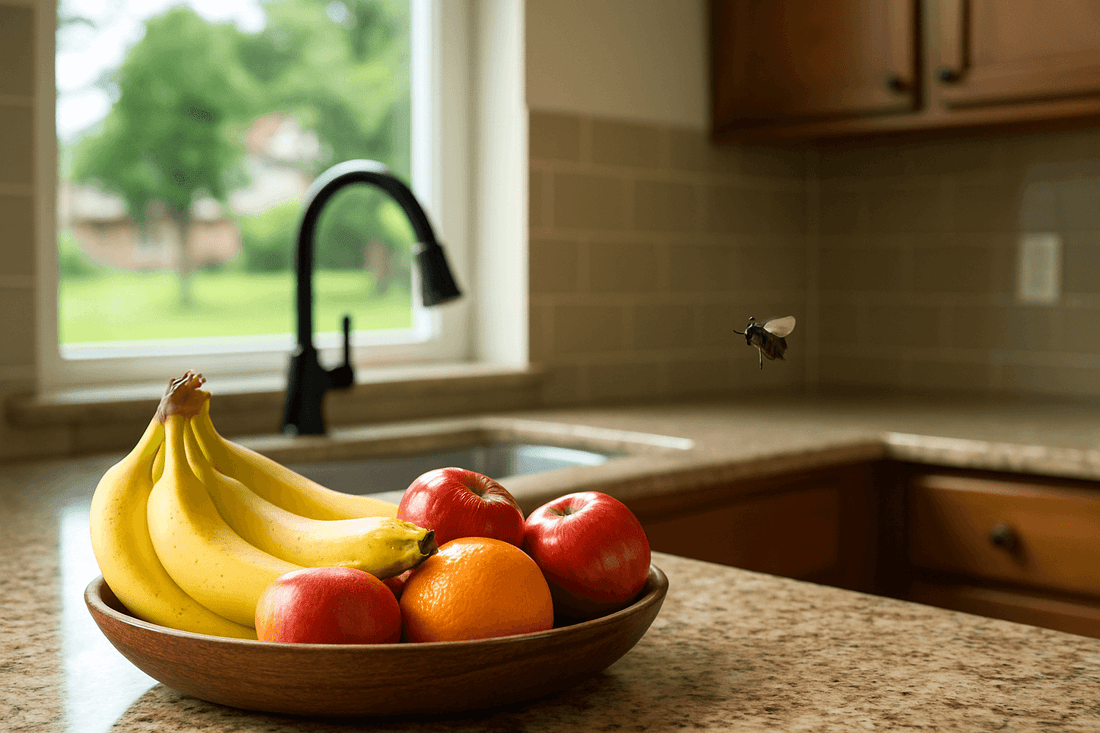Flies buzzing around your kitchen, bathroom, or living room aren’t just annoying—they can carry germs and ruin your peace at home. Whether you're in a busy city like Dallas or a quiet rural town in Vermont, indoor flies are a universal nuisance. Fortunately, science has provided a reliable solution: indoor fly killers. But how do these devices work? Are they really safe and effective? Let’s break down the science behind indoor fly killer devices and how they attract and eliminate flying insects indoors.
How Do Indoor Fly Killers Work?
At the core of most indoor fly killers is UV light technology. Many common flying insects, including house flies, fruit flies, and gnats, are instinctively drawn to UV light. These bugs see UV wavelengths differently than humans, making them especially responsive to it. When you ask, “Does UV light attract flies indoors?”—the answer is a firm yes. Devices like a UV fly trap or silent fly zapper use this light to lure the insects, either electrocuting them or trapping them on glue boards, depending on the model.
Types of Indoor Fly Killers: Electric vs Sticky Traps
This leads us to the question: “How does an indoor fly killer work?” There are generally two types: electric and non-electric. Electric bug killers or zappers use a grid charged with electricity to instantly kill bugs on contact. The flying insect is drawn in by the UV light and then electrocuted. On the other hand, sticky fly trap indoor models rely on a combination of light and adhesive glue boards. These are typically odorless fly traps, quiet, and safe for pets and children, which makes them ideal for use in places like bedrooms or kitchens. If you’re short on space, you may want to check out Indoor Fly Killer Solutions for Small Spaces for targeted product recommendations.
Are Indoor Fly Killers Safe to Use?
In Los Angeles, many residents choose indoor fly killers with light and glue board options because of their non-toxic fly control benefits. They’re discreet, energy-efficient, and don’t produce unpleasant smells. If you’re wondering, “Are indoor fly killers safe?”—yes, especially the non-zapping models. Just ensure you’re following the instructions and keeping the device away from areas where children can tamper with it. And if you want to maximize fly control in food prep areas, this guide on using indoor fly killers in kitchens is a great resource to start with.
What Happens When a Fly Hits a Zapper?
Another common concern is, “How do flies die in bug zappers?” When they make contact with the electric grid, the current quickly disables their nervous system. It’s instant and highly effective, especially at night when insects are most active. In fact, many users in humid states like Florida report that indoor fly killers are most effective at night, thanks to stronger UV attraction in darker environments.
Fly Trap vs Fly Killer: What’s the Difference?
Still unsure which to choose? Consider this: the difference between fly trap and fly killer lies in the method of extermination. Traps usually capture bugs for later disposal, while killers (especially electric ones) eliminate them immediately. Both can be part of a well-rounded pest control for flying insects strategy. For a full product comparison and expert recommendations, take a look at Best Indoor Fly Traps in 2025 for the latest models and reviews.
Choosing the Right Indoor Fly Killer for Your Needs
Ultimately, the best indoor fly killer for you depends on your needs. If you have pets, look for indoor fly killers safe for pets. If you hate buzzing sounds, go for a silent fly zapper. Want something more eco-conscious? Choose a non-toxic fly control solution with no chemicals. Some devices even combine features, like electromagnetic fields and UV light—although electromagnetic vs UV fly killer effectiveness varies depending on the pest species and environment. If you're wondering exactly what types of pests you're dealing with, this article on 13 Flying Insects Found in Your Home may help identify the culprits.
FAQs About Indoor Fly Killers
1. How do indoor fly killers work?
They attract flies using UV light or scent, then kill or trap them using electric grids or sticky glue boards.
2. What is the best indoor fly killer for kitchens or bedrooms?
A silent, odorless fly trap with UV light and glue boards is ideal for indoor spaces like kitchens and bedrooms.
3. Are indoor fly killers safe for pets and kids?
Yes—non-electric, chemical-free models are safe for homes with pets and children when used properly.
